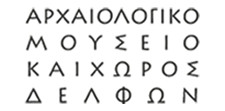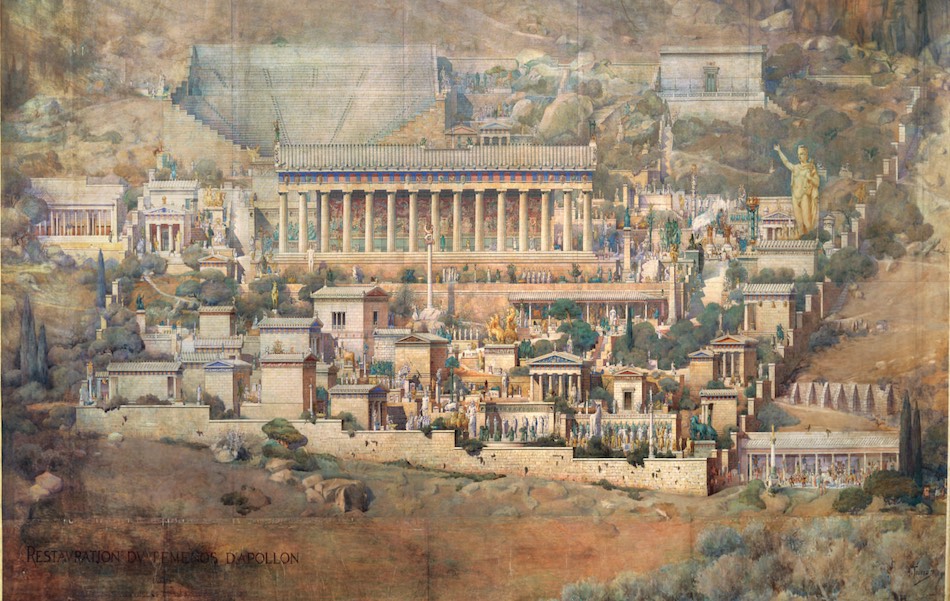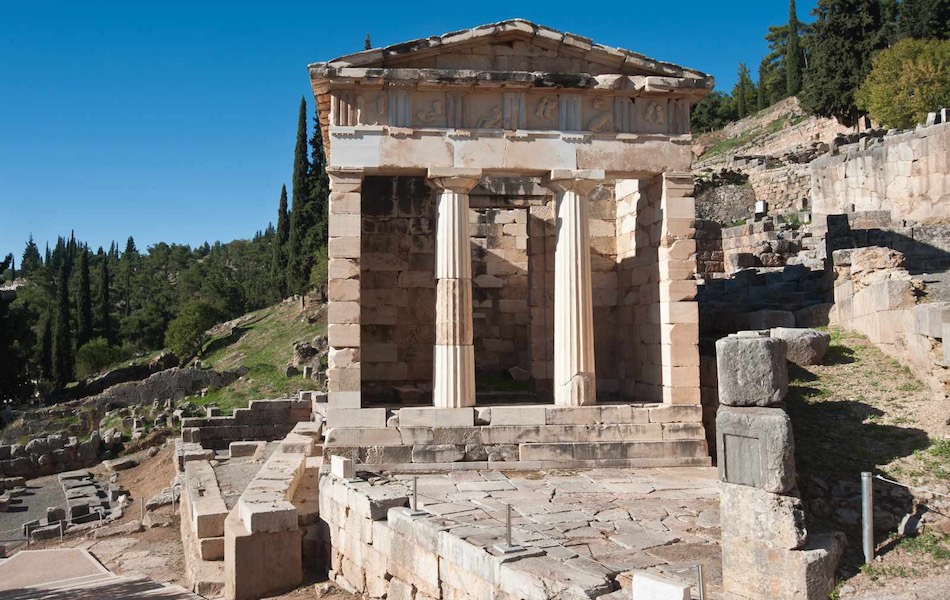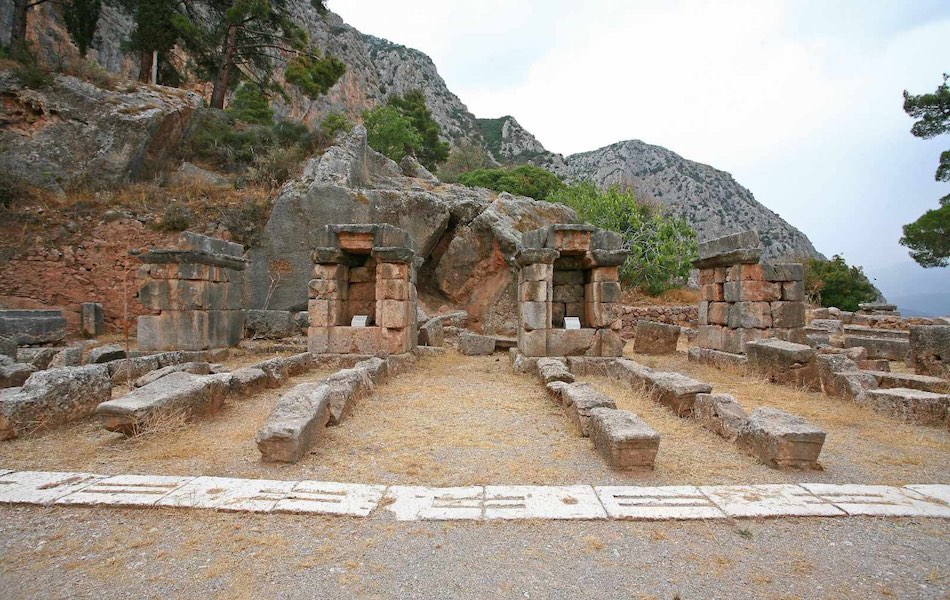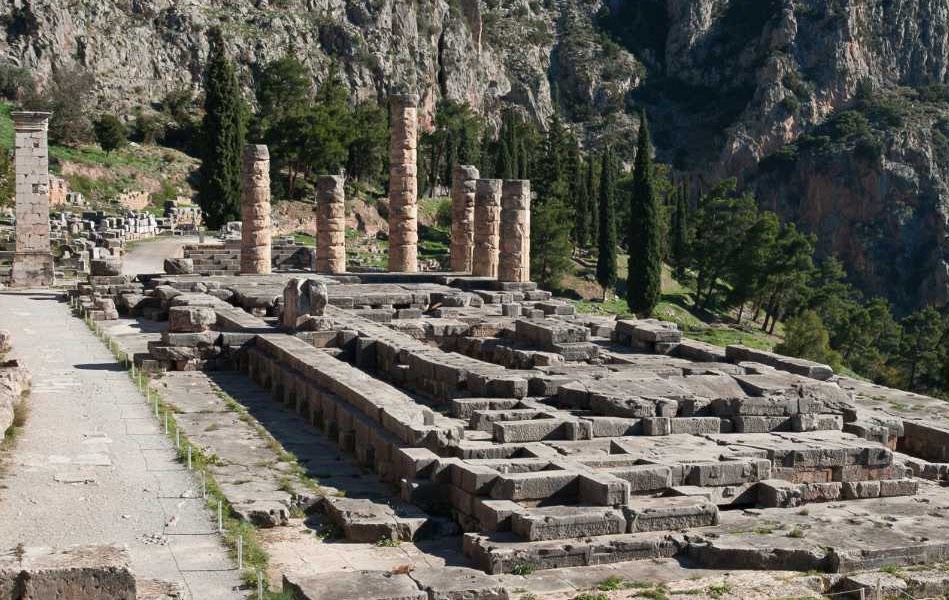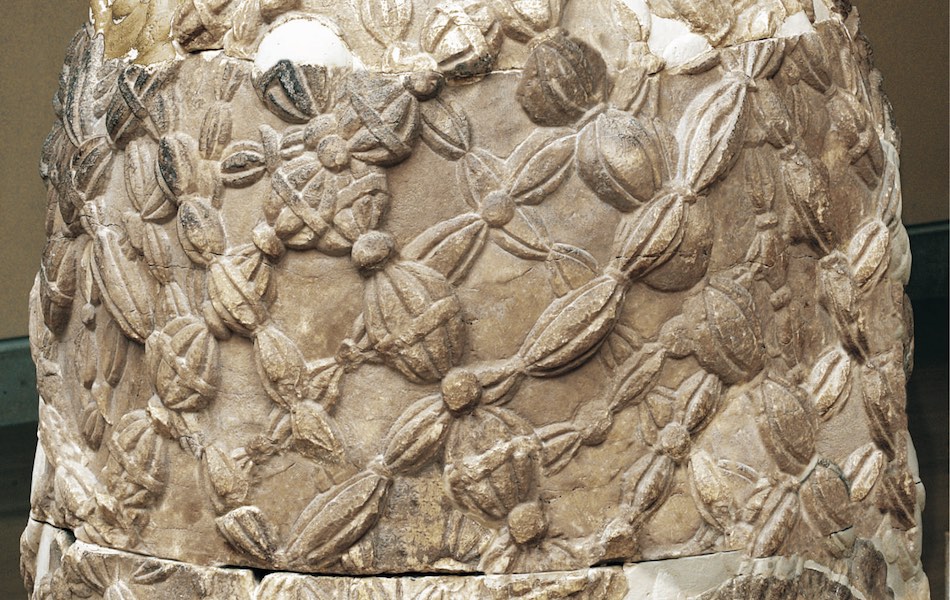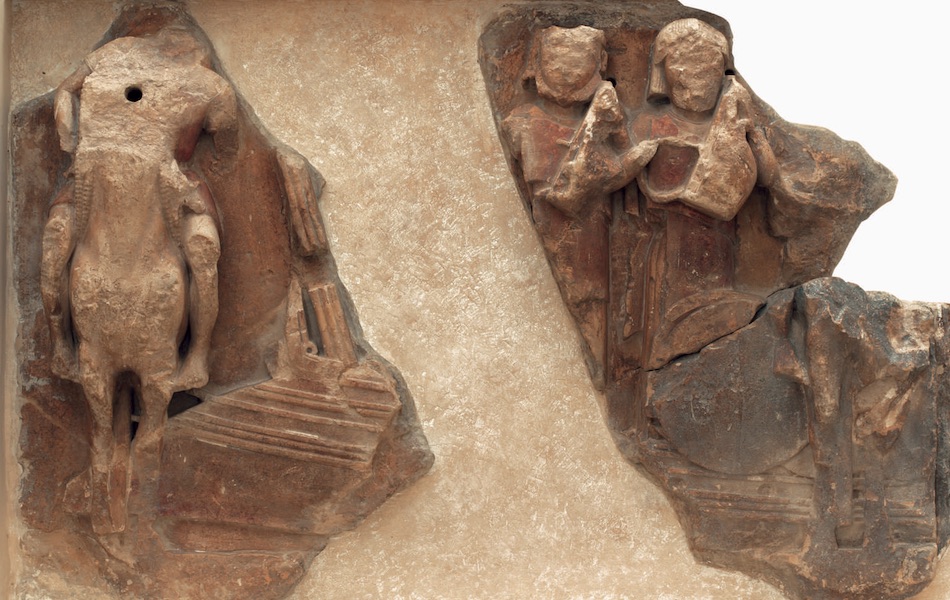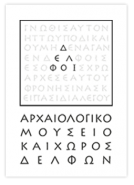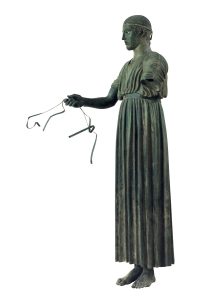
The Charioteer (Heniochos):
The bronze statue of the Charioteer, the youth who won the chariot race at the Pythian Games, was dedicated by the tyrant of Sicily Polyzalos. It is an exquisite work of the Classical period, possibly rendered by the eminent bronze sculptor Pythagoras. The face of the statue is animated by the well-preserved eyes, inlaid with semiprecious stones, the finely designed curls and the half-opened mouth. A band, the sign of victory, is tied around the man’s forehead. The statue dates back to 480-470 BC.
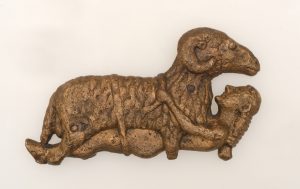
Plaque depicting Odysseus and a ram
Bronze plaque with relief representation of Odysseus or one of his companions escaping from the cave of Polyphemus tied to the belly of a ram. The plaque possibly formed part of the decoration of a vessel or a piece of furniture. It is dated between 550 and 500 BC.
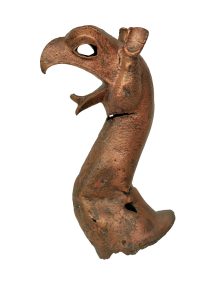
Protome of a griffin
Bronze protome of a griffin that served as an attachment to the rim of a cauldron. The griffin, with the head of a bird of prey and the body of a feline, was a mythical creature influenced by the art of the East. In antiquity, the griffin took on an apotropaic role, as it repelled evil forces. It belongs to the 7th c. BC.

Figurine of a kouros
Bronze figurine of a kouros, produced by a Cretan workshop. The figurine bears the characteristics of the Daedalic style, namely frontality, nudity, triangular face, and hairstyle with triangular formations. The art of the period to which the figurine belongs, the 7th c. BC, is called Daedalic after the mythical Daedalus who first modelled and gave life to full-size statues.
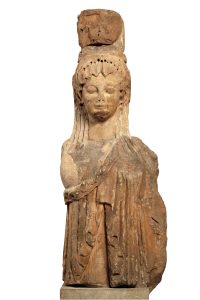
Kore from the Treasury of the Siphnians
Korai were female statues of the Archaic period, characterized by the beautiful “archaic smile”, the large almond eyes and the elaborate hairstyle. Korai were dressed in richly decorated garments with painted or inlaid metal jewels. The Kore from the Siphnian Treasury together with the statue of her twin sister, which is now lost, were mounted on the facade of the building, supporting the epistyle. It dates from 530 BC.
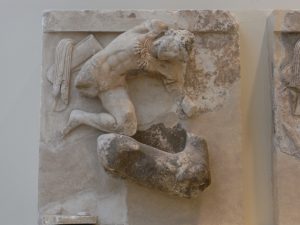
Metope from the Athenian Treasury, Heracles and the Hind of Ceryneia
On the relief metope of the Treasury, the hero Heracles is shown fighting with the Ceryneian Hind. The lion pelt is knotted around the chest of Heracles and on his back are depicted his quiver and himation. In the scene, Heracles, owing to his physical power but also his intelligence, has captured the golden-horned hind after excessive effort. It dates back to 490 BC.
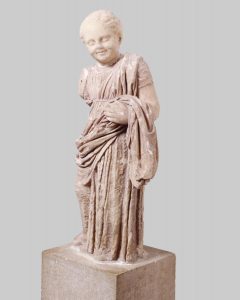
Statue of a little girl
The adorable little girl of Delphi, made of marble, is clad in long chiton, around which the himation is wrapped. In antiquity, similar statues of girls were dedicated to Artemis Bauronia by their parents, as effigies of the faithful who sought the goddess’s favour. Due to the characteristic garment, the little girls were called arktoi, namely she-bears, the beloved animal of Artemis. It dates from the 3rd c. BC.
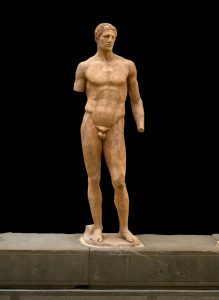
Statue of the pankratiast Agias
The sculpture forms part of a family votive offering of Daochos II, who was a member of the Delphic Amphictyonic League. Among the statues of Daochos’s relatives stands out that of his great-grandfather Agias. Agias lived in the 5th c. BC and was a pankration champion. The sculpture is marked by its idealized features. It is dated to the 4th c. BC.
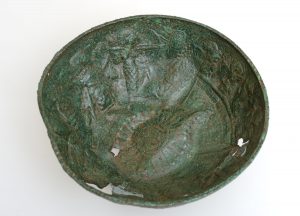
Cypro-Phoenician phiale
Bronze phiale depicting the siege of a city. It belongs to a series of luxurious vessels that circulated in the Mediterranean during the 8th and the 7th c. BC. Phialae were works produced by Cypriot and Phoenician workshops, influenced by Egyptian art. On the surface is shown a scene of a city siege, while a chariot is drawn by a winged griffin. It dates from the late 8th c. BC.
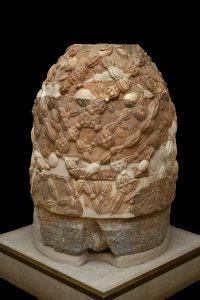
Omphalos
Carved ovoid stone representing the navel of the world that symbolized Apollo’s oracular power. The relief bands on its surface depict the agrenos, the woollen mesh decorated with semiprecious stones that covered the sacred omphalos. According to the myth, when Zeus wanted to find the centre of the Earth, he released two eagles flying from opposite ends of the world that met at Delphi. At that point, Zeus threw down the magic stone, the omphalos. The depicted stone crowned the “Dancers of Delphi Column” (also known as “Acanthus Column”). It dates back to 330-325 BC.

Statuette of a male figure
Ivory statuette from the Asia Minor coast depicting a male figure as “despotes theron”, namely as master of the beasts and nature. The figure possibly portrays Apollo himself. This precious object may have functioned as part of the decoration of the throne dedicated at Delphi by the king of Phrygia Midas. It is considered the work of a Greek artist with eastern influences. It dates from the 7th c. BC.
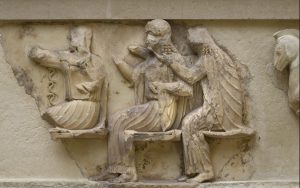
Detail from the east frieze of the Treasury of the Siphnians
In this section of the frieze is illustrated the Assembly of the Gods, who are about to decide on the outcome of the combat between Achilles and Memnon. The portrayed goddesses are Athena, Hera and Thetis who supported the Achaeans. The frieze of the Siphnian Treasury has been regarded as one of the masterpieces of the archaic art both for its rich narrative character and the high-quality artistic rendering of the numerous figures depicted. It is dated before 525 BC
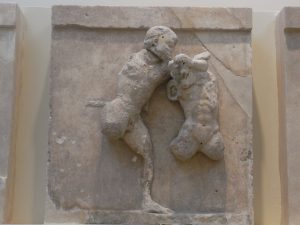
Metope from the Athenian Treasury with representation of the fight between Theseus and the Minotaur
On the metope, made of Parian marble, unfolds the fight of Theseus with the Minotaur. The Athenian hero and mythical founder of the Athenian democracy has already subdued the Minotaur, the monstrous creature that lived in the labyrinth of King Minos’s palace and devoured the youths and maidens of Athens. The Athenian Treasury was dedicated at Delphi following the victory of the Athenians in the Battle of Marathon. The relief metope dates from the early 5th c. BC.
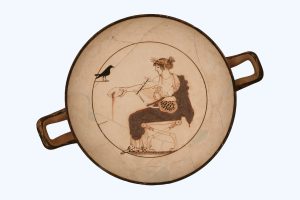
White kylix with representation of Apollo
Apollo is shown holding a lyre with seven strings, made of tortoise shell, and a libation phiale. The god, who is crowned with a laurel wreath, wears white chiton, red himation and leather sandals. He sits on an ornate seat with crossed legs terminating in lion’s paw feet. Perhaps the black bird depicted is the raven which, according to the myth, announced to the god the marriage of his lover, the nymph Coronis. It dates from 470 BC.
MUSEUM OF DELPHI
